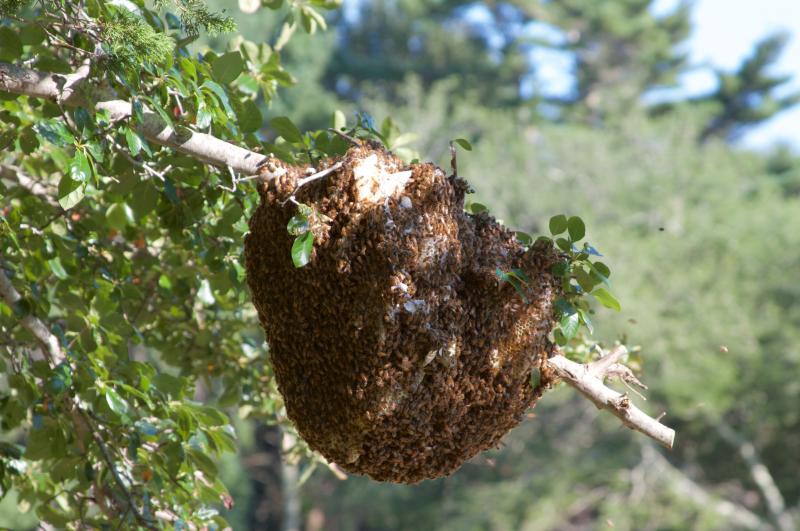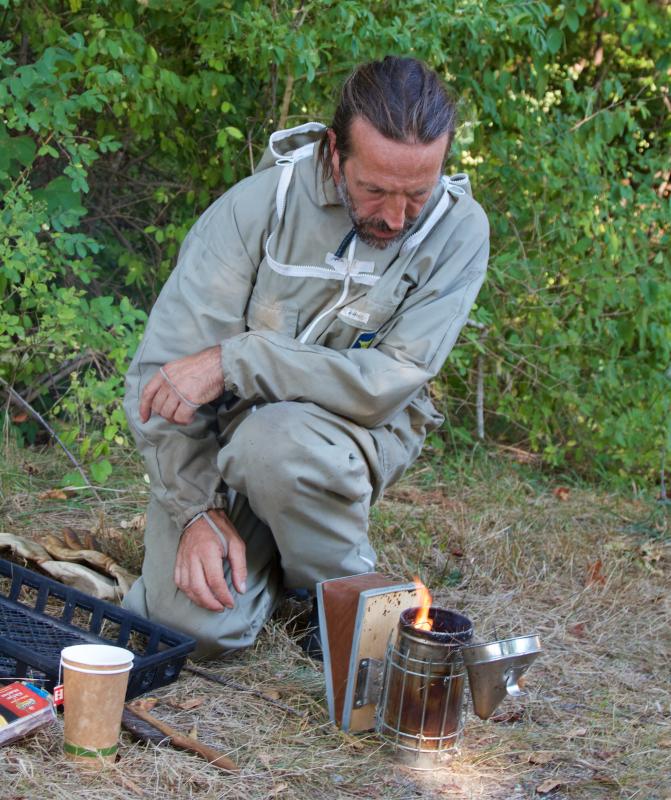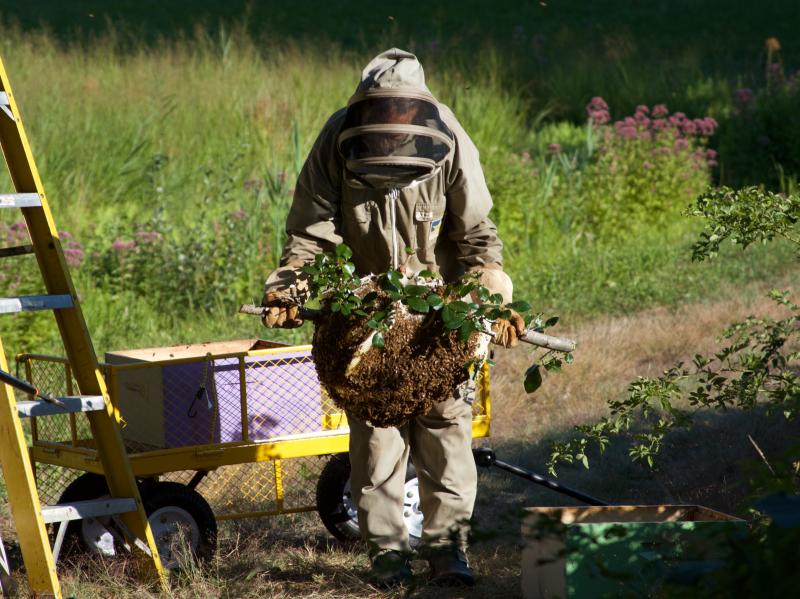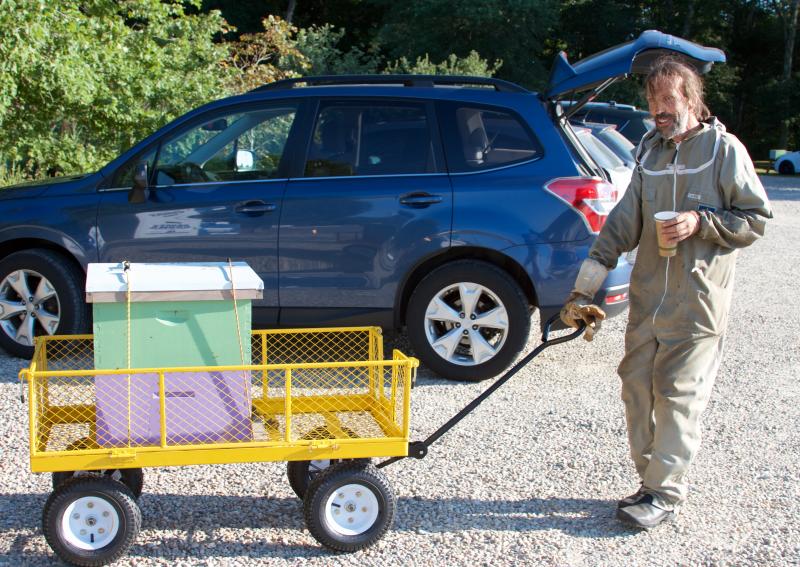Helping a hive thrive: How On Earth gives 'friendly bees' new home
Before he approaches the hive, Colin Millar calmly takes a sip of hot Earl Grey tea and then zips up his protective suit. Relocating some 20 to 30,000 bees isn’t something you rush into, and this is a tricky colony.
In the past several weeks honeybees have settled onto a tree branch just behind How On Earth, filling up on the flowers that edge a cranberry bog and establishing themselves with honeycombs and brood until the branch bows under their weight. On Friday, it was time to move them.
“They’re happy where they are. They’re on the edge of a wetland. There’s a lot of forage for them,” said Barbara Link, owner of Agraria Farm and Edibles in Rehoboth.
But the precarious location of the beehive means they wouldn’t last a New England winter, say Link and Millar, who work together on the organic farm.
The pair have plenty of experience with bees on the 16-year-old farm, and Millar manages their 20-hive apiary, so How On Earth Manager Mary Ann Buckley asked them to help.
Millar has moved a few swarms – when bees evacuate their hive – but established colonies with comb, honey and brood are more difficult. Plus, August isn’t an ideal time to unsettle a hive. Millar said it’s like moving all their furniture and throwing it into a big room.
This late in the year, it’s hard for a hive to bounce back and collect enough food for the cold months ahead. He and Link, however, believe this hive has a good chance.
“We’ll see if we can get them in the hive and to build quickly. In the spring, we can probably split the hive because it’s so vigorous,” Link said.
Although How On Earth was cultivating it’s own hive last year, those bees swarmed leaving empty boxes. Buckley thought this could be their missing hive, but Millar believes they’re wild bees, which are an encouraging sign.
“Survivor bees,” said Link, help provide genetic diversity that can improve their chances in a world where colony collapse disorder has destroyed many hives. Mites, pesticides sprayed on lawns and crops and harsh winters can do in otherwise healthy hives.
To keep these bees alive, Millar said he planned to use comb left by How On Earth’s runaway bees so that this new hive can establish itself more quickly.
Before that, he and Link had to get the hive in the boxes. Dripping comb and honey, the hive measured at least 18 inches across and Link had to cut the limb (not wearing a bee suit) while Millar gripped either side of the branch so the bees didn’t crash to the ground.
“He’s very meticulous and careful,” Link said, though she admitted, “Getting the branch in a box is going to be interesting.”
Both Link and Millar have sustained hundreds of beestings, but that’s never a good time, so caution was key as was being comfortable around the bees.
“You have to be very calm around bees,” said Link. “Like all animals, they sense fear.”
Once Link snipped the branch, Millar, eye to eye with the bees, gently lowered them into the prepared box, thankful that the hive fit with a little trimming of the branch.
As the dozens of bees swirled around his head, Millar pronounced, “They’re fine. They’re really friendly.”
He put the lid on the hive, which was seated on a rolling cart, and resuming his cup of tea, began gently pulling the whole operation up a slight incline, through the parking lot and to their new home in the backyard.
The bees seemed to settle quickly, and Millar will continue to monitor them in coming weeks.
“They’re very nice bees,” he said.




















